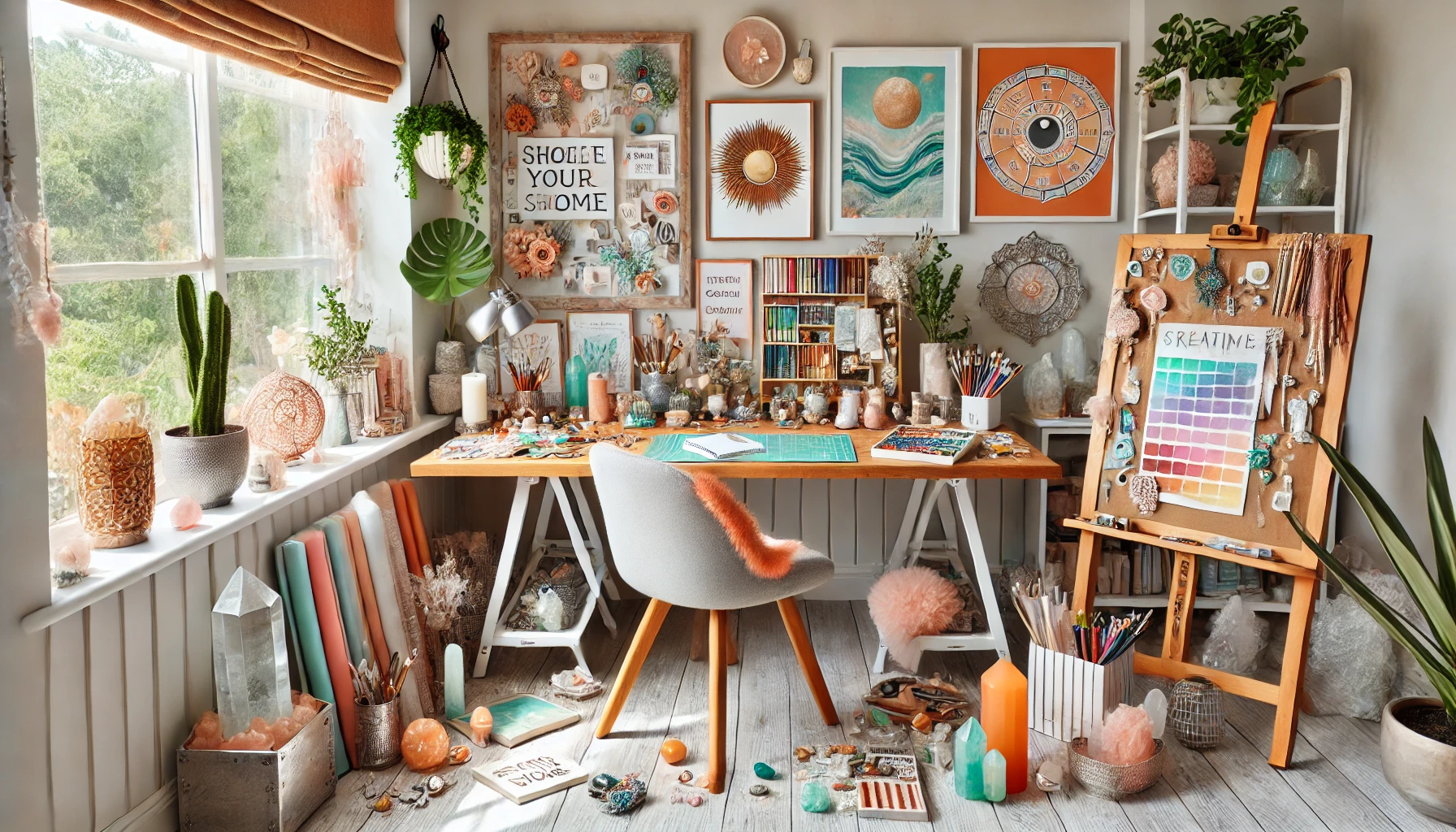How to Use Feng Shui to Cultivate Creativity and Inspiration at Home
Creativity isn’t just for artists—it’s essential for problem-solving, innovation, and emotional expression in daily life. If your space feels dull or your ideas feel stuck, Feng Shui can help reignite inspiration by clearing blocks, enhancing flow, and encouraging self-expression. Whether you write, paint, design, build, or simply want more spark in your life, your environment plays a powerful role.
Here’s how to use Feng Shui to invite more creativity and inspiration into your home.
1. Activate the Creativity Area in the Bagua Map
According to the Feng Shui Bagua map, the Creativity and Children area is located in the West part of your home or room.
- Use a compass or Bagua overlay to locate this zone
- Decorate the space with metallic tones, round shapes, and joyful items
- Add tools or symbols of your creative work—paintbrushes, notebooks, craft materials, etc.
- Keep the space light, uncluttered, and playful
This is your energetic playground—make it fun, not forced.
2. Use Metal Element to Support Creative Clarity
In Feng Shui, the Metal element enhances focus, structure, and creative precision.
- Add items in white, gray, or silver tones
- Use metal bowls, frames, or circular decor
- Combine with Wood (growth) or Fire (passion) elements to balance structure with spontaneity
- Avoid too much heaviness—keep it minimal and expressive
Metal clears mental clutter so ideas can flow with purpose.
3. Incorporate Art and Visual Stimuli That Inspire You
Surround yourself with what moves you.
- Display art you love, whether it’s your own work or others’
- Add vision boards, inspirational quotes, or dream sketches
- Let the artwork reflect the mood you want: vibrant, peaceful, bold, or experimental
- Change visual elements seasonally to keep energy fresh
What you see fuels your internal imagination.
4. Use Color to Stimulate Creativity
Color activates emotion and imagination.
- White and metallics – clarity and possibility
- Orange – enthusiasm and playfulness
- Yellow – optimism and mental stimulation
- Aqua or teal – creative expression and emotional flow
- Avoid muddy or heavy tones in your creative zones
Try accent pillows, art, rugs, or office supplies in these hues.
5. Designate a Dedicated Creative Space
Even a small corner can become a creative sanctuary.
- Use a desk, table, or easel in a well-lit area
- Keep supplies accessible but organized—clutter blocks flow
- Sit in command position: facing the room with your back to a wall
- Include a comfortable chair, good lighting, and inspirational items nearby
This physical zone tells your mind: “Here, we create.”
6. Declutter and Make Room for New Ideas
Old energy = old ideas.
- Let go of unfinished projects that no longer excite you
- Donate supplies or tools you haven’t used in a year
- Clear out drawers, folders, or shelves that feel stagnant
- Trust that clearing space opens a channel for fresh ideas
Creativity thrives where energy can move freely.
7. Add Movement or Sound to Spark Flow
Stuck energy needs activation.
- Play instrumental music, nature sounds, or upbeat rhythms while creating
- Ring a bell or chime before starting a project
- Use your voice—speak ideas aloud or hum
- Move your body—stretch, walk, or dance in the space
Motion opens the flow of inspiration.
8. Incorporate Playful and Personal Touches
Creativity comes from curiosity and joy.
- Add whimsical objects—a quirky sculpture, playful lamp, or favorite childhood photo
- Keep a notebook or sketchbook where you can freely brainstorm
- Display past creative wins or reminders of your unique style
- Let your space reflect freedom, not perfection
Play is a serious part of the process.
9. Use Affirmations and Mantras for Creative Confidence
Words shape your inner narrative.
- Frame or write affirmations like:
- “I am open to inspiration.”
- “Creativity flows through me with ease.”
- “My ideas are valid and valuable.”
- Place these by your desk, on your mirror, or inside a drawer
- Speak them before or during creative blocks
Confidence is an energetic habit.
10. Balance Fire and Water Elements for Inspired Flow
In Feng Shui, Fire = passion and Water = imagination.
- Use a candle, red accent, or sun image to stimulate motivation
- Add a bowl of water, flowing fountain, or blue object to support emotional depth
- Balance is key—too much Fire may lead to burnout; too much Water may lead to drifting
- Observe what you need more of and adjust accordingly
These elements help tune your creativity’s rhythm.
11. Refresh the Space Frequently
Creativity needs novelty.
- Rearrange items or art monthly to break visual patterns
- Change your tools, location, or materials from time to time
- Add seasonal elements—flowers in spring, cozy textures in winter
- Keep the energy responsive and alive
Stale spaces lead to stale output—keep it dynamic.
12. Celebrate Your Creative Process, Not Just the Result
Creativity is a journey, not a product.
- Light a candle when you begin a session as a ritual
- Journal or reflect afterward on how it felt—not just what you made
- Display creative works-in-progress proudly
- Allow your space to witness your evolution
Your home should cheer you on, not pressure you.
Final Thoughts: Your Environment Can Be a Muse
With Feng Shui, your home becomes a co-creator—removing blocks, holding space for ideas, and inspiring joy. Whether you’re painting a canvas, designing a business, or writing your next chapter, let your space reflect your power to imagine, play, and create freely.
You don’t have to wait for inspiration. You can build it—one intentional choice at a time.
